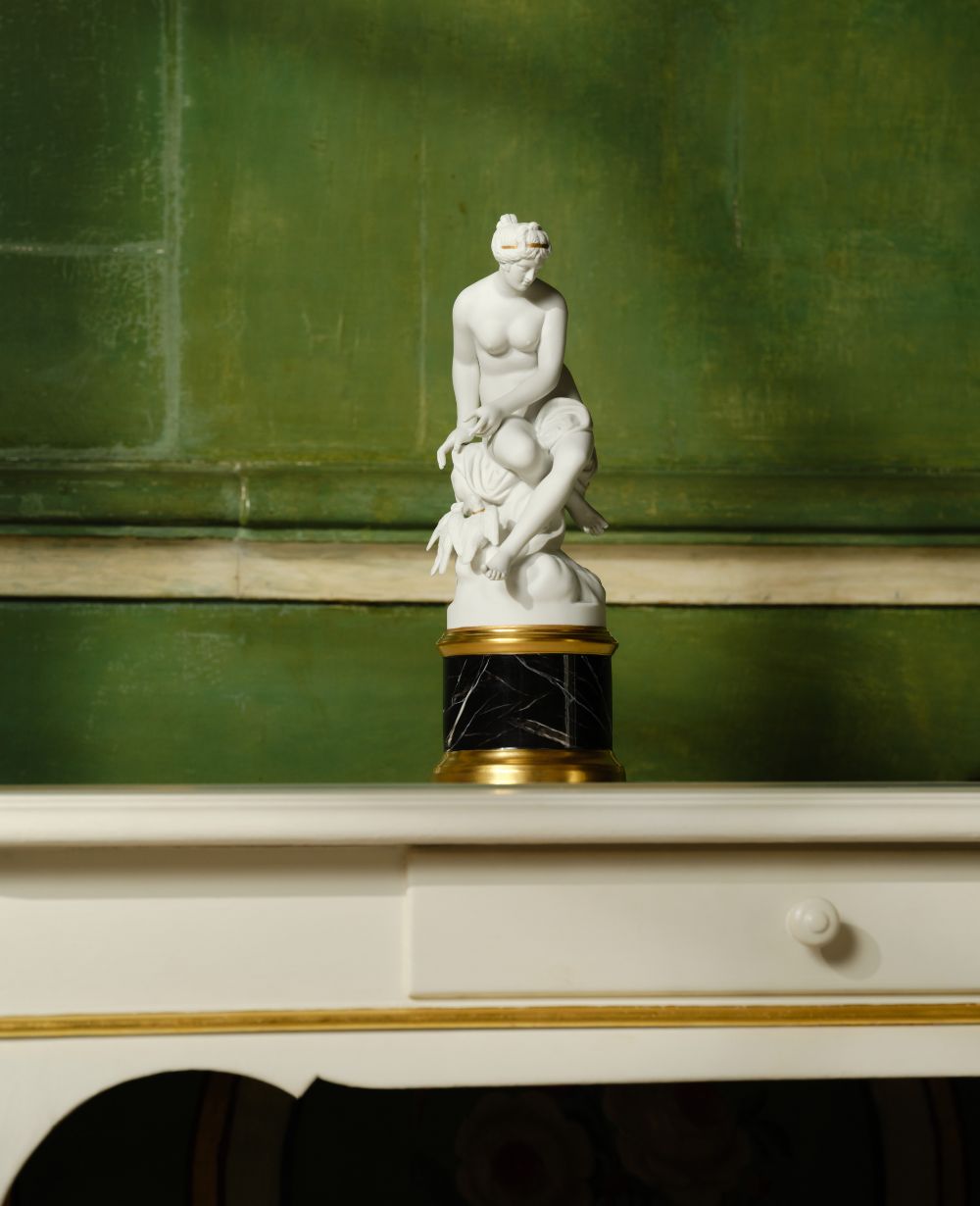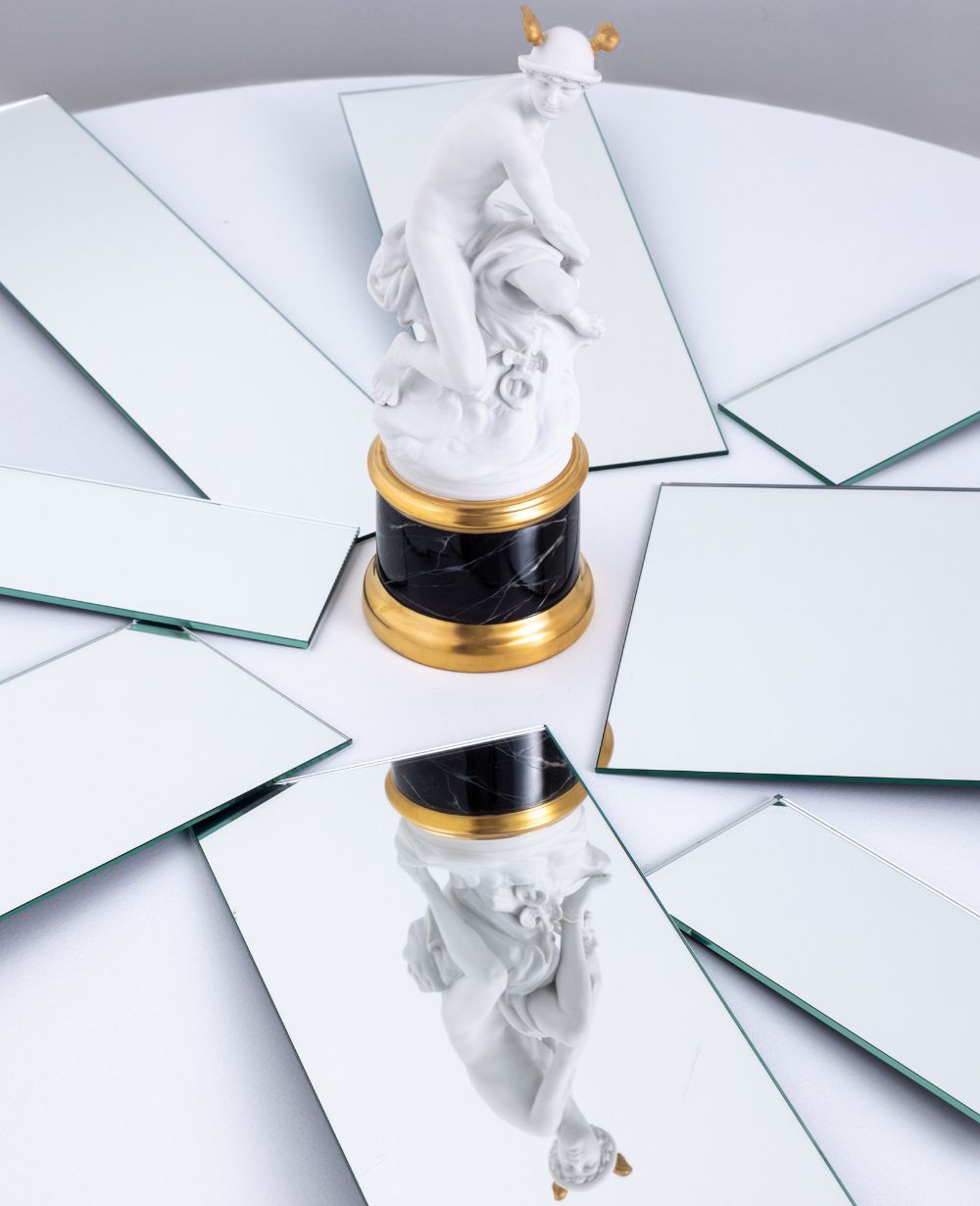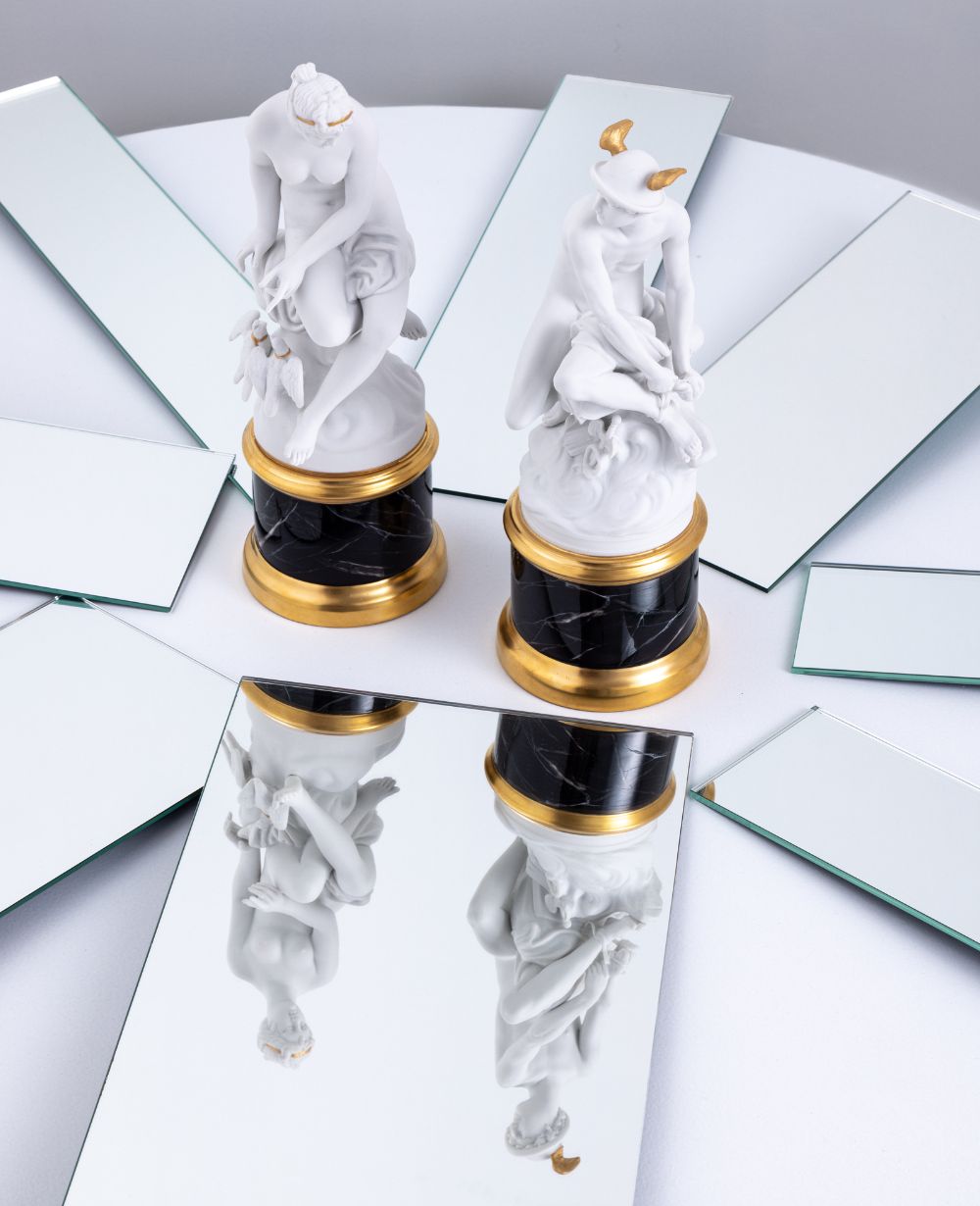Product description
In honor of its 260th anniversary, the Royal Porcelain Manufactory Berlin is bringing two special figures from the extensive manufactory archive back to life: With Venus and Mercury, KPM presents a detailed re-edition as artistic proof of the virtuosity of the KPM model workshop and master painters, reminiscent of the manufactory's royal and creative history.
The two unglazed figures, measuring 28 centimetres in total, are presented on a round and richly decorated porcelain base accentuated with profiled strips. It creates a link to the location of the statues in Sanssouci Park and is also presented in a decoration that places historical decorative techniques in a contemporary context. While the biscuit porcelain gods are reminiscent of the texture of marble, the plinth is so elaborately hand-painted that it gives the impression of real black marble. The sophisticated material imitation, combined with filigree painting in the highest quality polished gold, creates an exciting contrast to the unglazed surfaces of the figures.
The messenger of the gods Mercury, also known as „Hermes“ in Greek history, is depicted in his function as the god of trade. Sitting on a cloud, equipped with a herald's staff entwined with snakes and a winged hat, he ties his sandals and prepares for his departure. His female counterpart, Venus, also called „Aphrodite“ in Greek, as a symbol of beauty, observes worldly events from a heavenly perspective in a graceful pose. Her left hand points to a pair of doves sitting at her feet, a symbol of her work as an ambassador of love.






